- 1. Looking Down on Locarno
- 1.1. Traveling to Cimetta
- 1.2. Hiking Down
- 1.3. Lunch at Capanna Cardada
- 1.4. Sanctuary Madonna del Sasso
- 2. Verzasca Valley Adventure
- 2.1. Verzasca Dam
- 2.2. Ponte del Salti
- 2.3. Hiking from Brione to Sonogno
- 2.4. Grotto Efra
- 2.5. Sonogno
- 3. Reflections
- 4. Train Transportation
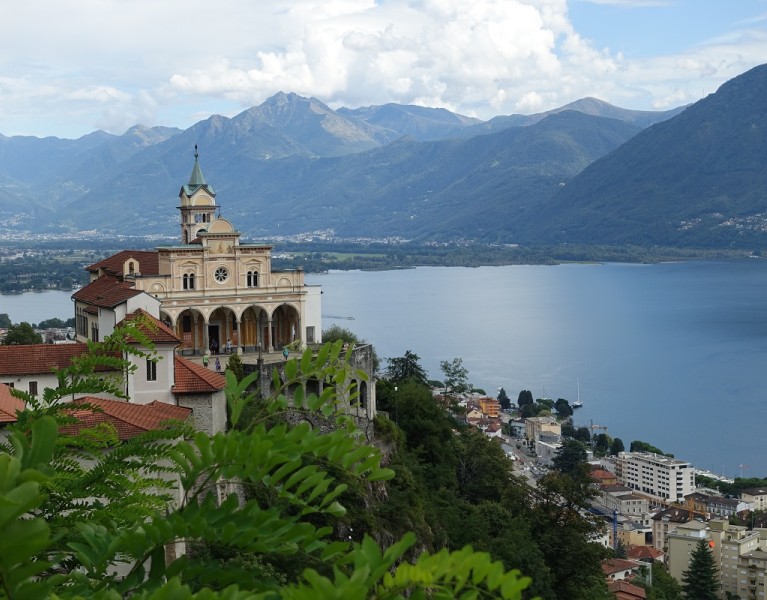
Trip Report: Hiking near Locarno, Switzerland
Table of Contents [Show]
Locarno benefits from its prime location on Lake Maggiore, the largest lake in southern Switzerland and the second largest lake in Italy. Since Imperial Roman times, Locarno has been a popular destination, reaching prominence when it became a notable European resort area at the beginning of the nineteenth century. Situated in the Canton of Ticino, close to the Italian border, the town offers excellent opportunities to indulge in a combination of Swiss and Italian culture in a mild Mediterranean climate known for its colorful camellias. Outdoor activities and Italian inspired food are plentiful year-round. For over 70 years, film mavens, along with award-winning performers, have visited Locarno to attend the Locarno International Film Festival.
In early September, I was introduced to some of the region's terrain and local hiking trails. Three nights in Locarno left a memorable impression.
Looking Down on Locarno
Traveling to Cimetta
Like other tiered cities surrounding a shoreline, higher elevations offer spectacular panoramic views. Jutta Ulrich, head of communications at Ticino Turismo, and Sabina Brack, a content and media manager at Schwiz Tourismus in Zurich, led our small group to the perfect vantage point.
My journey began at the Hotel Belvedere, an elegant hotel perched above Locarno. The property's convenient location provided easy access to a funicular station connecting the lakeside station with the cable car station at Orselina. This short railway has been operating since 1906. Our group joined others on a cable car ride to Cardada. As the car moved higher, our views expanded considerably, and the vegetation under the route became lusher. Before the 1950s, this area was only reachable by foot.
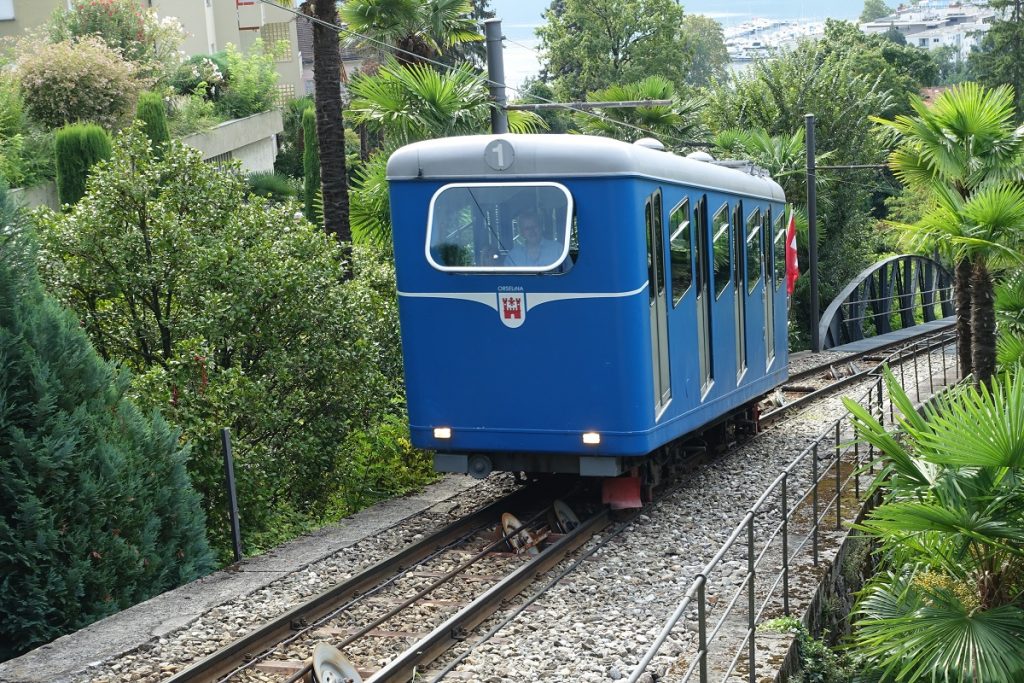
Jutta and Sabina escorted us along a suspended catwalk leading to a modern platform where we peered down on Locarno, Lake Maggiore, and the surrounding mountain ranges. Signs pinpointed the names of the towering peaks partially obscured by white puffy clouds. Crowds ebbed and flowed as we took our time to appreciate the impressive view and to take more than our share of images.
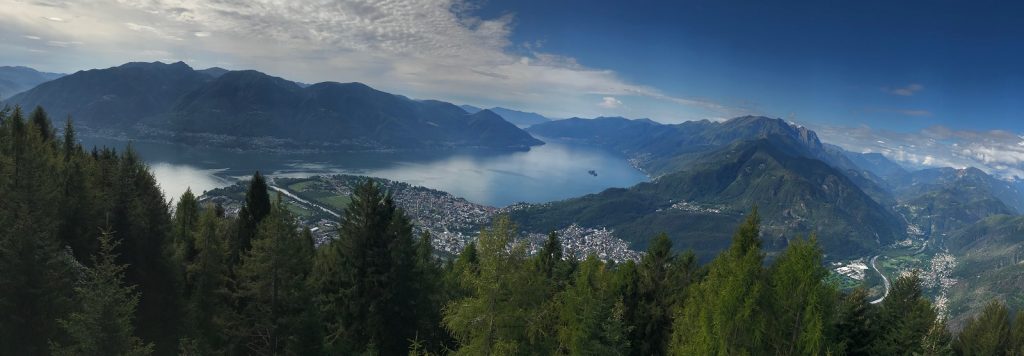
On our way to the chair lift, we passed a small park encouraging tactile stimulation. Some of us followed Jutta's suggestion to trek through the pathways filled with a multitude of surfaces. This unique park allows young and old to appreciate Mother Nature by taking an innovative approach. I can't remember another time when I willingly pranced barefoot in a forest.
To reach Cimetta (elevation 1,670 meters or 5,479 feet), I boarded a two-person chair lift with a safety bar. Unlike most North American chairlifts that follow the terrain going uphill, these spacious seats faced sideways, offering a better opportunity to gaze downhill.
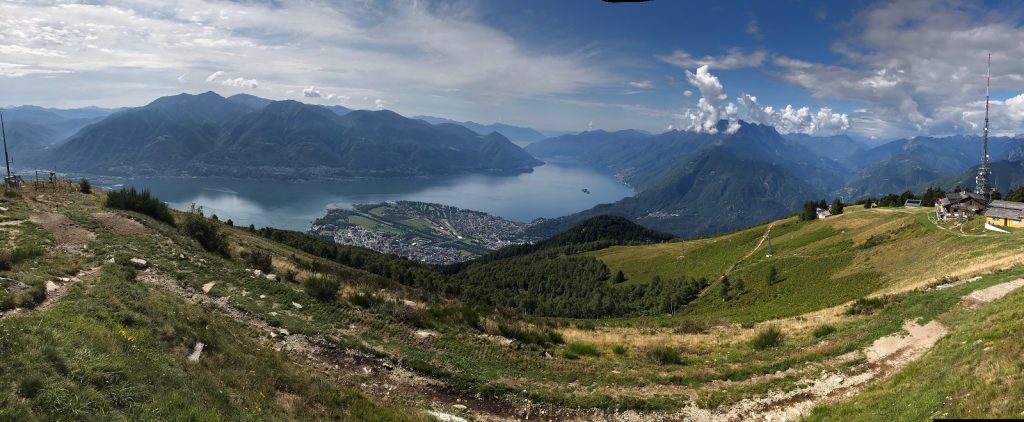
Hiking Down
A posted trail map at the top delineated a network of bicycle and pedestrian trails that led to higher peaks as well as to downward treks back to Locarno. Signage also described some nearby geological sites like the tectonic fault separating the Central Alps from the Southern Alps as well as places to find rocks millions of years old. Even though clouds continued to cover many of the surrounding peaks, Jutta pointed in the direction of Switzerland's highest mountain range the Valais Alps. From our vantage point, we could see the shoreline of Lake Maggiore, the lowest point in Switzerland and could only imagine the approximate location of the highest mountain.
Eventually, we descended from this majestic point down a winding path. To minimize erosion, the dirt path was occasionally covered with pieces of cobble. Cows grazed in nearby fence-enclosed pastures. A smattering of wildflowers clustered near our feet. While we encountered few hikers along our route, we did pass a couple of hunters openly carrying rifles. A sign reminded trekkers that they were 12 kilometers from Locarno.
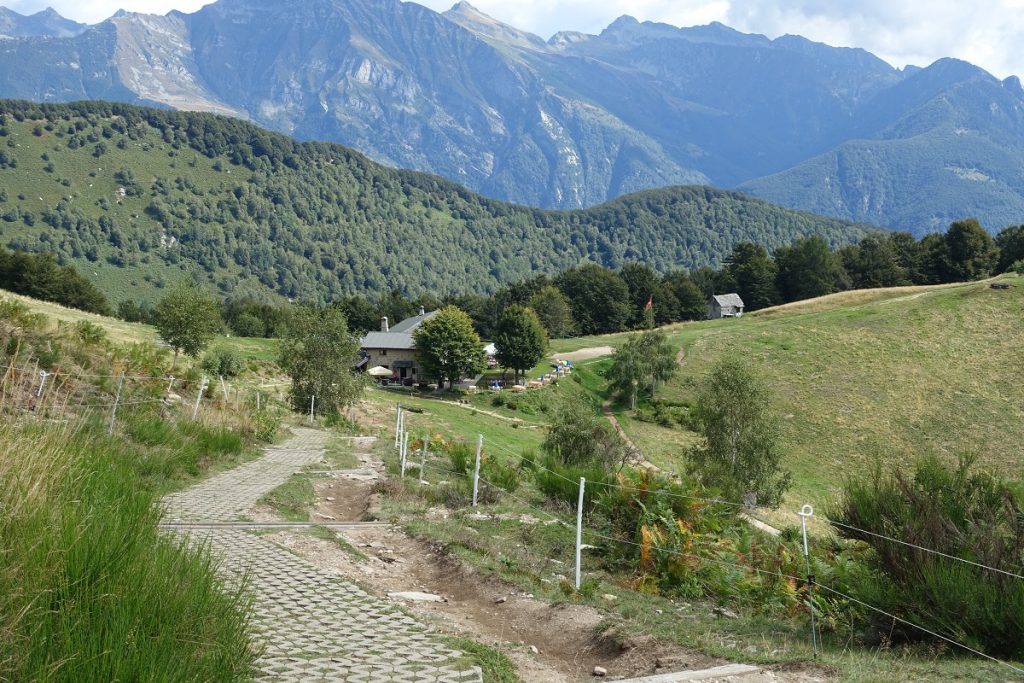
Lunch at Capanna Cardada
Around lunchtime, we reached Capanna Cardada, one of six restaurants on the mountain, where we sat on a wooden deck overlooking the valley surrounded by towering mountains. Jutta and Sabina patiently translated the entrees and drinks listed on the Italian menu. Most couldn't resist ordering a cappuccino or a sparkling fruit drink, two local favorites. As I had previously experienced, substantial portions were the norm for lunch entrees.
Sanctuary Madonna del Sasso
When it was time to depart from the restaurant, it wasn't easy to step away from this serene place. About half an hour later, we were on a cable car headed downward. From Oselina, we walked to the Sanctuary Madonna del Sasso, a historical landmark in Ticino with a fantastic view.
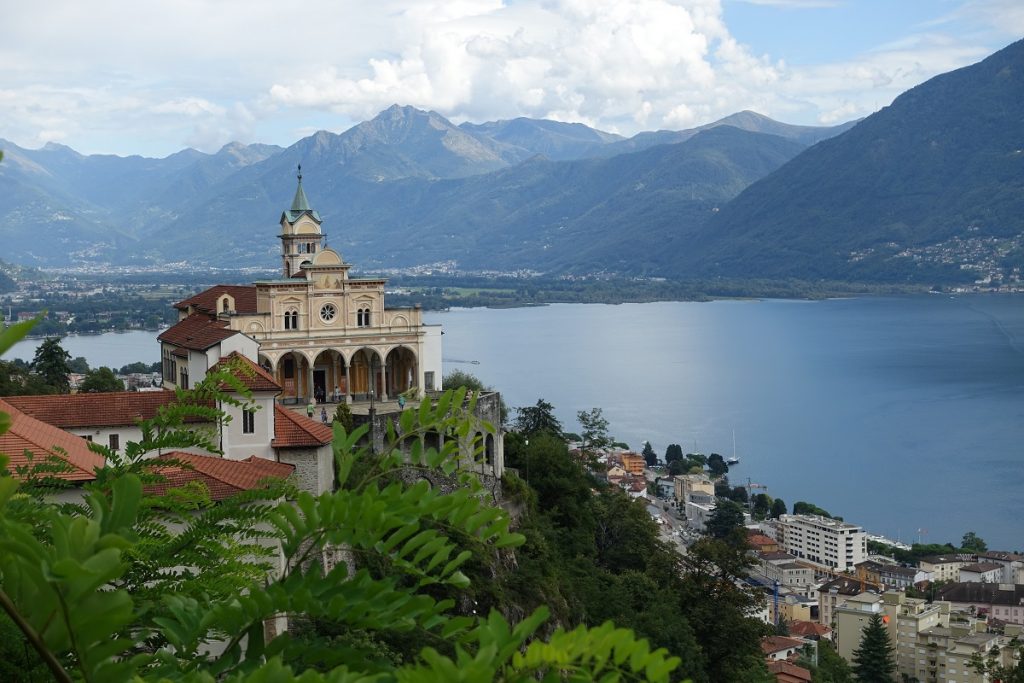
Only some of the onsite signage was in English. One placard reminded visitors of a 1925 peace conference held in Locarno with Germany, France, Belgium, England, Italy, Poland, and Czechoslovakia as participants. This meeting was designed to create a system of security for Western Europe. After that, Locarno was known as "The Town of Peace." In 1936, Germany denounced this agreement. A long series of steps took us further down the hill. By mid-afternoon, we returned to the Hotel Belvedere.
Verzasca Valley Adventure
To gain an overview of the Verzasca Valley, we followed Anna Bezzola onto a minibus headed to Brione Verzasca. Anna, the sole proprietor of Alps and Beyond, organizes hiking and cultural tours throughout Switzerland and Italy. Her background includes working several years for an American adventure travel company. This experience enhanced her English language skills.
Verzasca Dam
Along the route, our bus slowed a bit as we passed the Verzasca Dam, also known as the Contra Dam or Locarno Dam. Anna informed us that a stuntman jumped off the dam during the filming of the 1995 James Bond movie GoldenEye. Today, daredevils can emulate this feat by bungee jumping off the 721-foot dam.
Ponte del Salti
Another quick photo opportunity occurred when we stopped briefly to see the Ponte del Salti, a bridge that crosses the Verzasca Valley. The reconstructed double-arched bridge showcases a typical stone bridge constructed in medieval times.
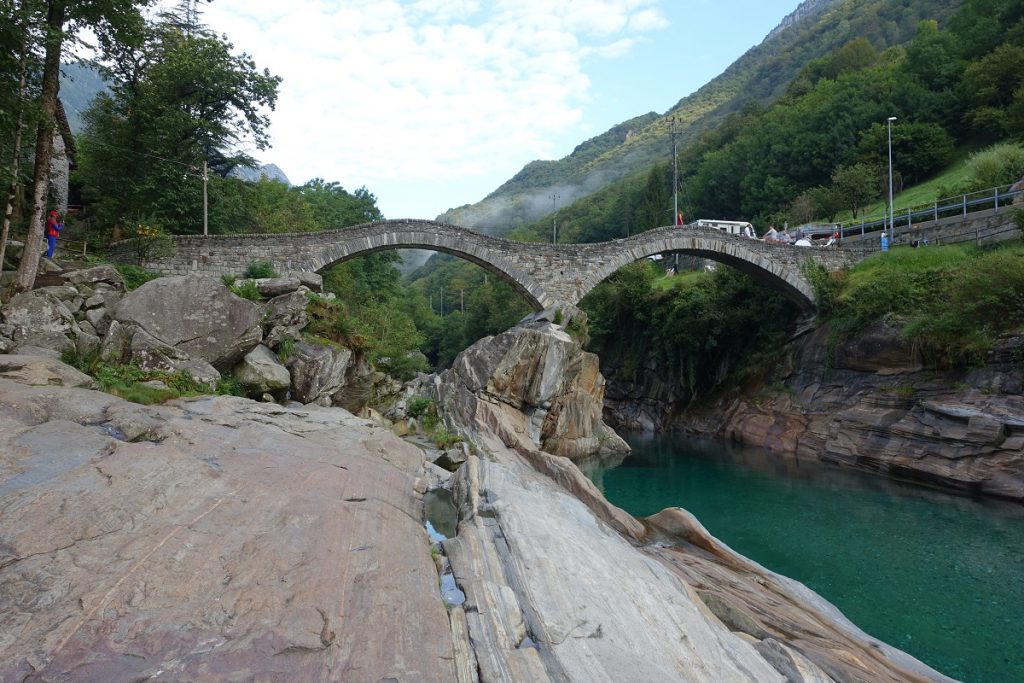
A small film crew photographing a model in a red dress monopolized the picturesque site for an extended period. Fortunately, we had sufficient time to wait until they vacated the area, but not enough time to explore the adjacent trail system. Yellow signs with arrows and estimated times pointed in multiple directions.
The whole setting mesmerized me. Multi-colored rocks at the bottom of the emerald-colored clear water and enormous boulders straddling the riverbank remain as byproducts from the time of the glaciers. In one direction, the stone bridge sitting against the backdrop of the river and surrounding mountains offered one set of images. When I looked the other way, I clicked numerous shots of a distant building and a clock tower with the river running through enormous boulders in the foreground.
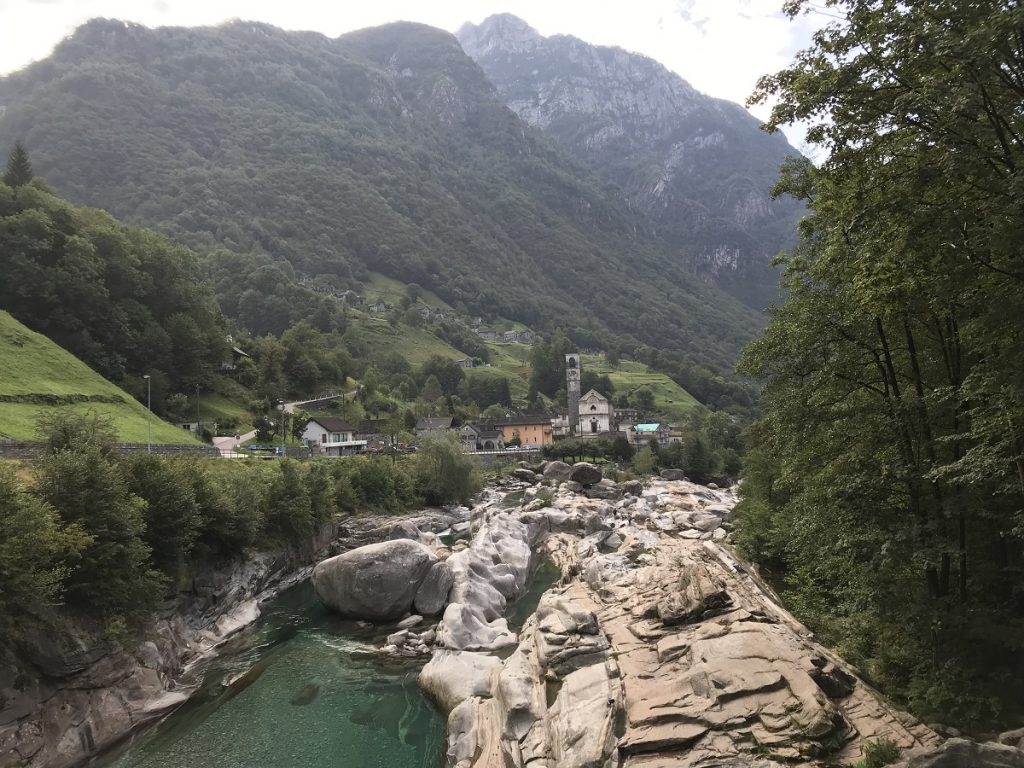
By visiting in the early morning, we were able to avoid the crowds who flock to this area to sunbathe, swim in the dangerous, icy cold waters, and bungee jump from the bridge. On our return trip, we observed how this serene place, ripe for stunning photos, had been transformed into a congested tourist area.
Hiking from Brione to Sonogno
Heading further into the valley, the area became more secluded. Anna informed us that more than 25,000 residents emigrated from this area in the 19th century due to the difficulties of living in remote, steep terrain. Many of these former Ticino residents ended up in Petaluma, California. When asked about the significance of the small shrines built centuries ago, we were told that these structures along the paths and roadways helped the people maintain their faith during tough times.
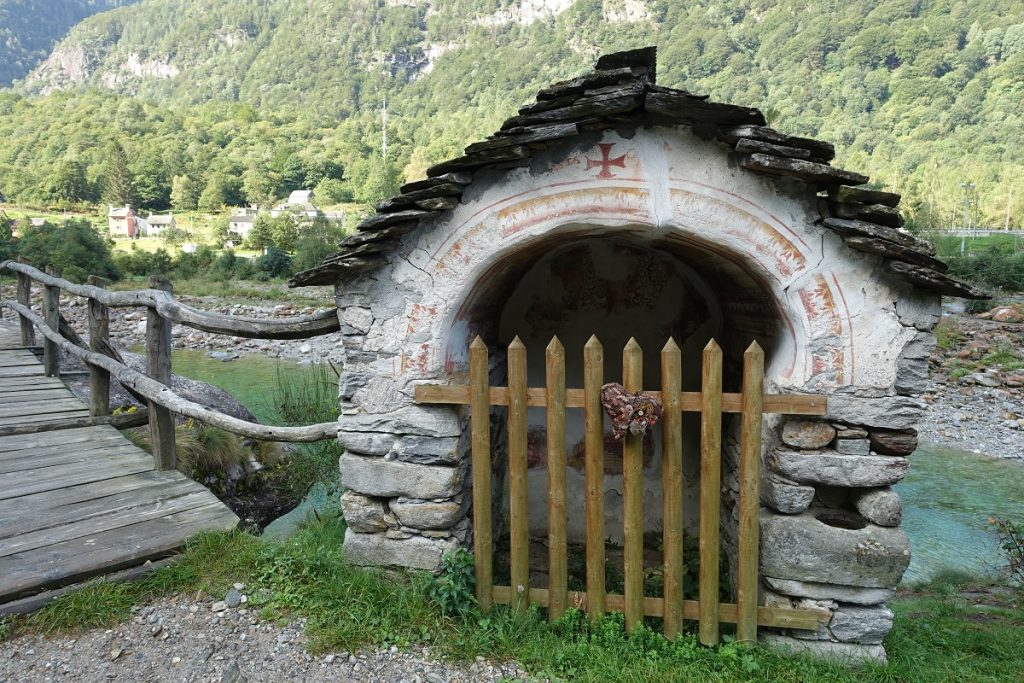
At the Brione trail head, we followed Anna along a marked trail that weaved in and out of forested areas and deep green fields. On this well-trodden path, we passed clusters of homes or hamlets, some dating back to the 1400s. We could see that a few were being renovated for use as vacation homes. Several of these old structures appeared to be vacant.
Anna picked a few tiny wild plums for us to try. Wild mushrooms, along with a full spectrum of wildflowers, grew amongst the birch, beech, chestnut, hornbeam, hazelnut, ash, and native cherry trees. From a distance, we could see coniferous trees perched in the higher altitudes. Even though we rarely came upon any other trekkers, we were not fortunate to see any of the indigenous wildlife. Deer, wild boar, chamois, fox, badgers, squirrels, and snakes are known to inhabit the region. Surprisingly, the wolf has reappeared after a long absence. Anna stopped to point out an old pit that was once used as a wolf trap.
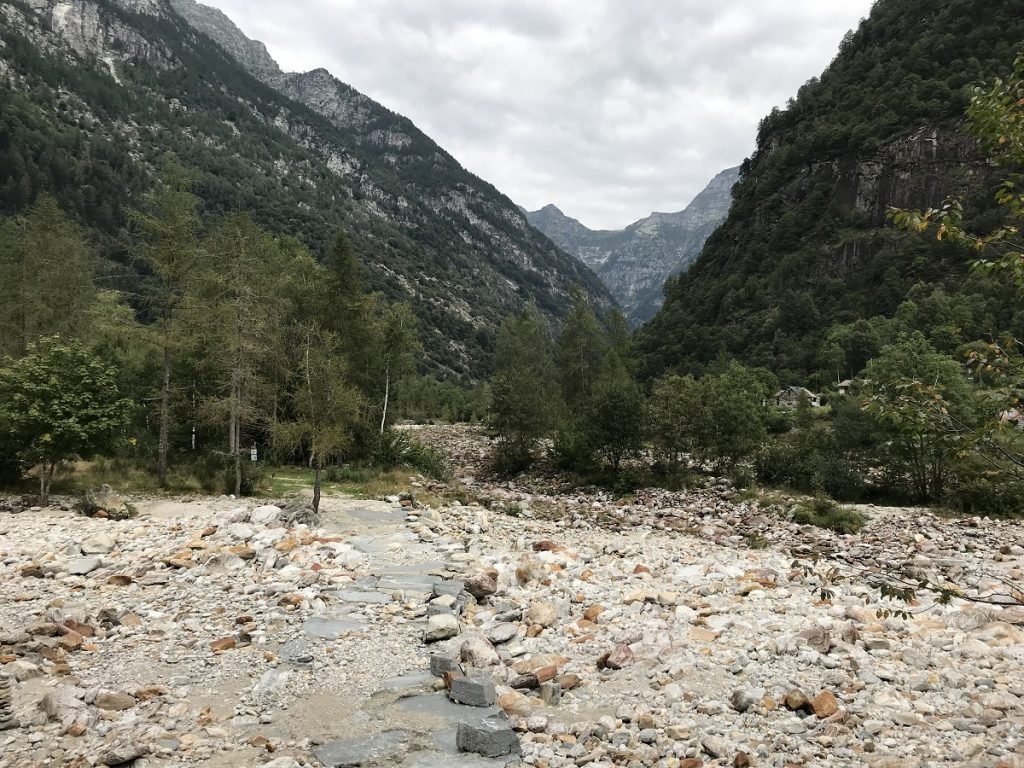
While there are many popular trails in Ticino, Anna feels that the Verzasca Valley aptly represents the culture and tradition of the Canton of Ticino. On our designated route, we enjoyed a pristine environment dotted with samples of authentic architecture, including outdoor ovens. Wooden bridges allowed us to cross the river, and a few small waterfalls were an added benefit.
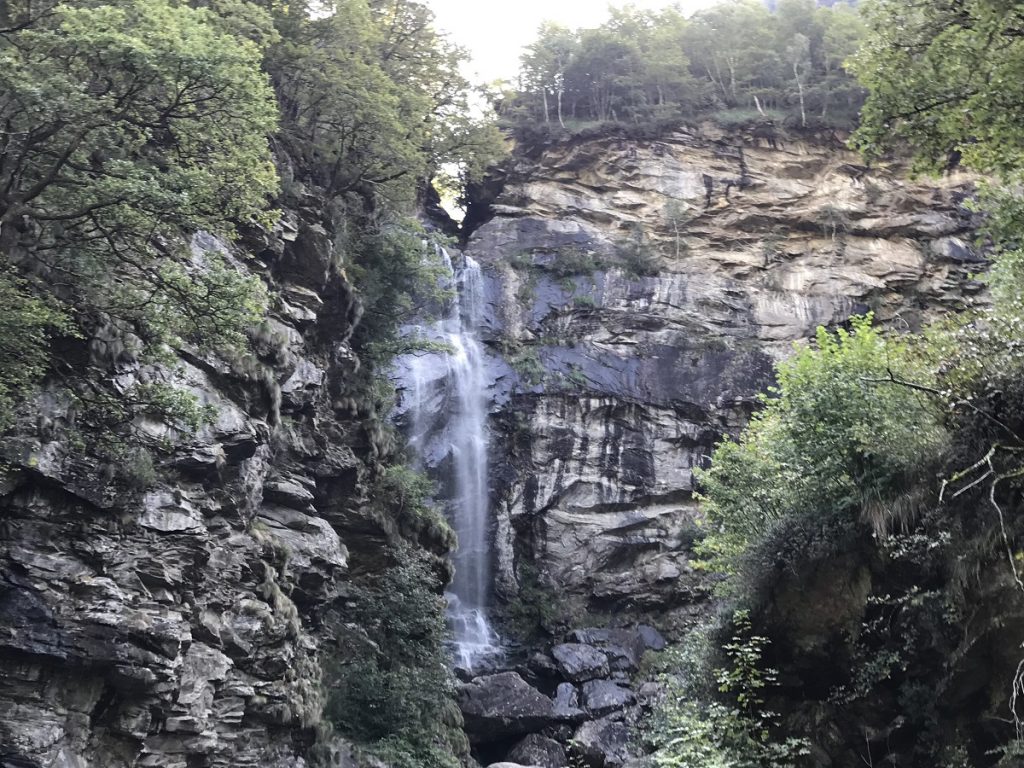
Grotto Efra
After leisurely trekking a few hours, we reached the rustic village of Sonogno, the last town of the valley. Here I experienced my first meal in a Swiss Grotto dating to the 1940s. Traditionally, Swiss grottos in Ticino stored cheese, meat, and wine and rarely offered cooked foods.
At Grotto Efra, just a short distance from the Froda waterfall, we dined in an outdoor area where customers sit on benches adjacent to solid granite tables. First, our group was served a green salad served with a mega chunk of cheese made at a local pasture along with a basket of homemade bread. For the main course, we selected one of the traditional polenta dishes made with vegetables, local cheese, or pork. The enormous mound of polenta filled a full-size plate and was topped with a generous portion of one of the fillings.
Sonogno
Before returning to Locarno, we strolled through the town and admired its cobblestone walkways, stone houses with shutters and balconies decorated with red and pink flowers, the communal oven, and a clock tower. Small shops sold locally made goods, and the Museum of the Verzasca Valley showcased local history. The popular Wool Center was not open during our visit.
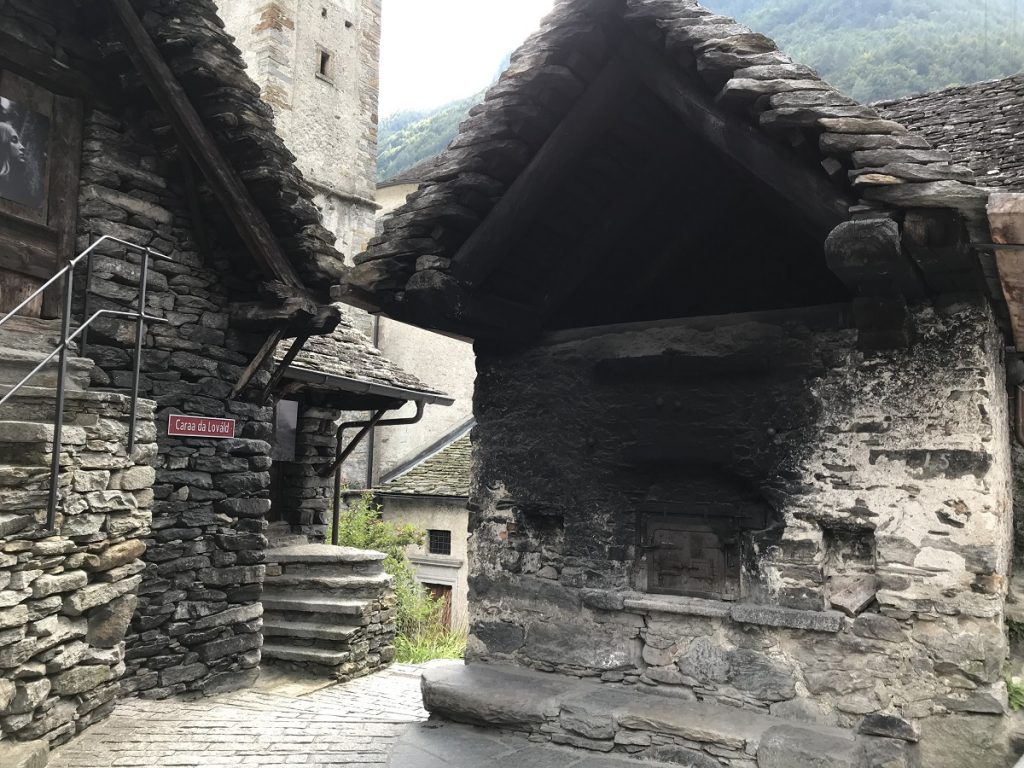
When we reached the main square, more than a dozen casually dressed adults were singing traditional German songs. It was a relaxing way to end a day of hiking in the valley before our minibus drove us back to Locarno.
Reflections
My brief visit to Locarno allowed me to get a small taste of Ticino. From the high point in Cimetta to hiking in the Verzasca Valley, I encountered the diversity of the region and simultaneously tasted some of the local cuisines and drinks. This short adventure has enticed me to return to Switzerland so that I can traverse more of the countryside and experience its diverse culture and history.
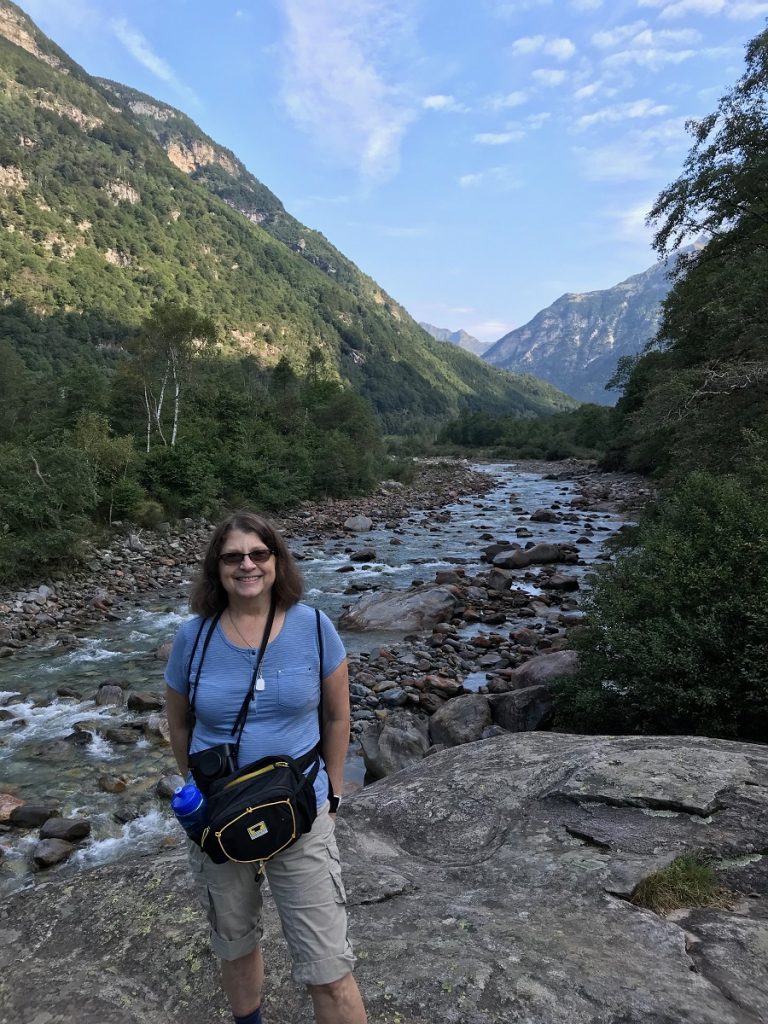
Train Transportation
To reach Locarno, I relied on my Swiss Travel System pass. From Zurich International Airport, I took a train to the downtown train station in Zurich, where I boarded another train headed to Lugano. I exited the train at Bellinzona and transferred to my third train that terminated in Locarno. My travel time was approximately three hours.
Switzerland Tourism hosted Sandy Bornstein's 3-night visit to Locarno and her stay at the Belvedere Hotel. All of the opinions expressed in this story are based on the author's experience.
When Sandy Bornstein isn’t trekking in Colorado or writing, she's traveling with her husband Ira. After living as an international teacher in Bangalore, India, Sandy published an award-winning book, May This Be the Best Year of Your Life, as a resource for people contemplating an expat lifestyle and living outside their comfort zone. Among other things, Sandy writes about family, intergenerational, and active midlife adventures highlighting land and water experiences. All photos by The Traveling Bornsteins.


